The WildTech (Technology for Wildlife Conservation) project emerged organically from the need felt for technological innovation and design across existing programmes at WCT that have involved tracking endangered species such as the Indian pangolin and Ganges river dolphin, mitigating the threats faced by wildlife from infrastructure such as dams and railways, reducing the dependence of forest-dwelling communities on fuelwood by providing energy-efficient water heating solutions, mitigating human-wildlife conflict, and wildlife health. The project seeks to harness the latest, cutting-edge global advances in electronics, telecommunication, computation, and their translation to open-source and user-friendly technological innovations to enable greater impact for conservation of wildlife and ecosystems.
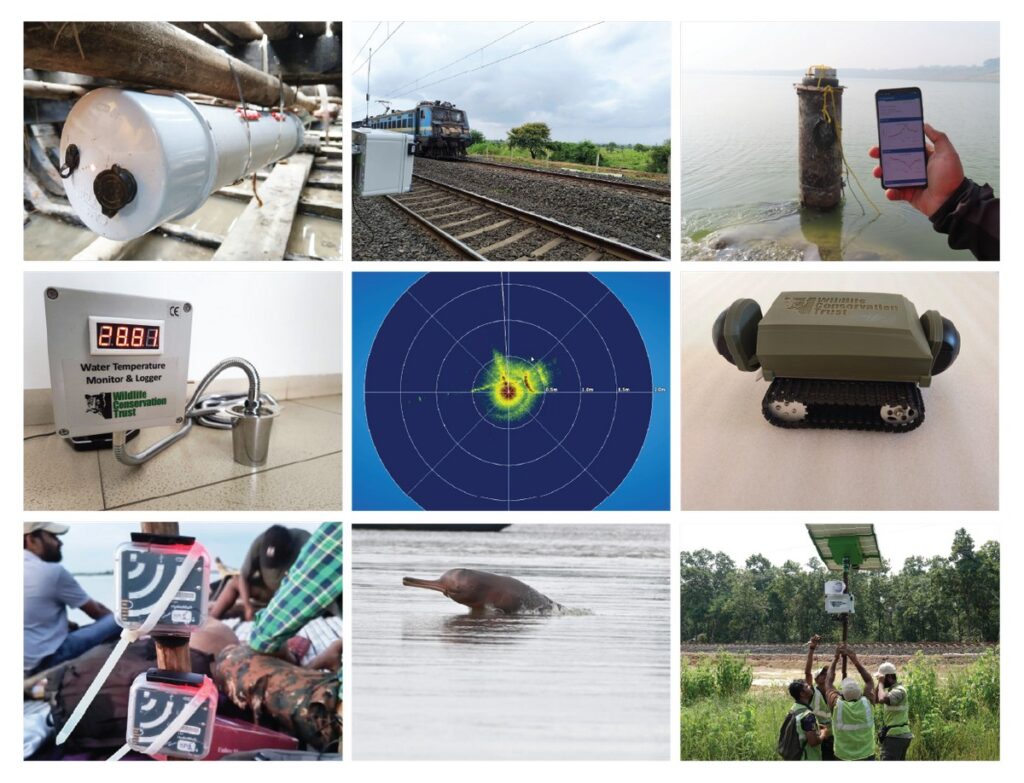
High costs, lack of technical skill, and limited institutional capacity in forest departments were identified as the primary barriers to adoption of cutting-edge technology in wildlife monitoring. These barriers are what WCT seeks to address and resolve through this project. Innovative, tech-based solutions can contribute towards solving a wide range of conservation issues and challenges from aquatic wildlife getting caught in fishing nets as bycatch to wildlife mortalities on railway lines due to collisions with trains to inability to monitor animals underwater due to poor visibility, and so on. They can also help to empower the forest department and other government enforcement agencies by enabling stronger law enforcement and saving time, money, and effort.
Through this project WCT aims to develop low-cost, open-source, replicable, and customised tools for sustainable conservation impact.
Under this project, we have developed over 15 technological innovations for enhancing efficiency and impact of wildlife conservation, monitoring, and data collection/analysis.
Some of the technological innovations developed by WCT include:
1. Three types of Early Warning Systems for various wildlife conservation and monitoring applications:
- boatBAITS – a system for tracking boat movements and alerting boat users to move away from wildlife areas.
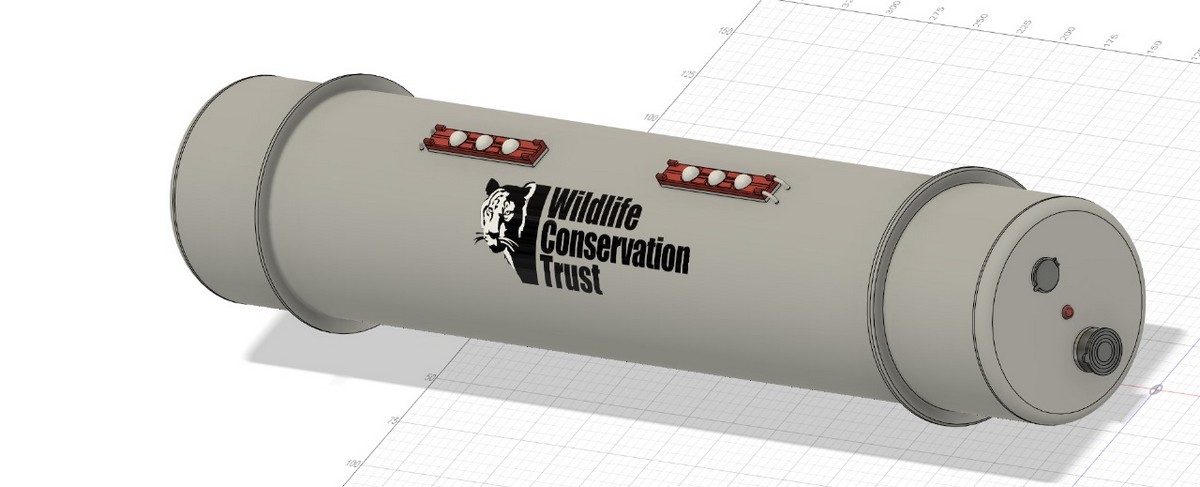
BoatBAITS device to track fishing boats in and around protected areas to help follow fishers’ movements in order to alert them to stay away from no-go areas where fishing is banned, and wildlife hotspot areas.
- Railway Alert – a pre-emptive system for early indication to wild animals walking on railway tracks to move away, in advance before the approach of the train
- Hydrology Sensor Suite – a real-time and telemetered hydrological data gathering systems to be installed at sites downstream of dams or barrages, to identify any water flow releases or stoppages that could negatively affect riverine wildlife.
Railway Alert Early-Warning System
Annually, over 20,000 wild animals are estimated to die on railway tracks due to train collisions in India, according to official figures of the Comptroller and Auditor General, Govt. of India. In forest areas through which trains pass, high levels of mortality and injury to wildlife is a serious concern for the Indian Railways as well. Most alert systems that were tried out by the railways were mainly for elephants (which also led to damage to railways), but the success rate was poor because these systems placed the onus on the locomotive drivers to reduce speed or take measures to avert collisions. However, loco drivers are ill-equipped to act on such alerts due to their schedule speeds and issues of train delays and related traffic problems. For smaller wildlife, no systems of early warning exist.
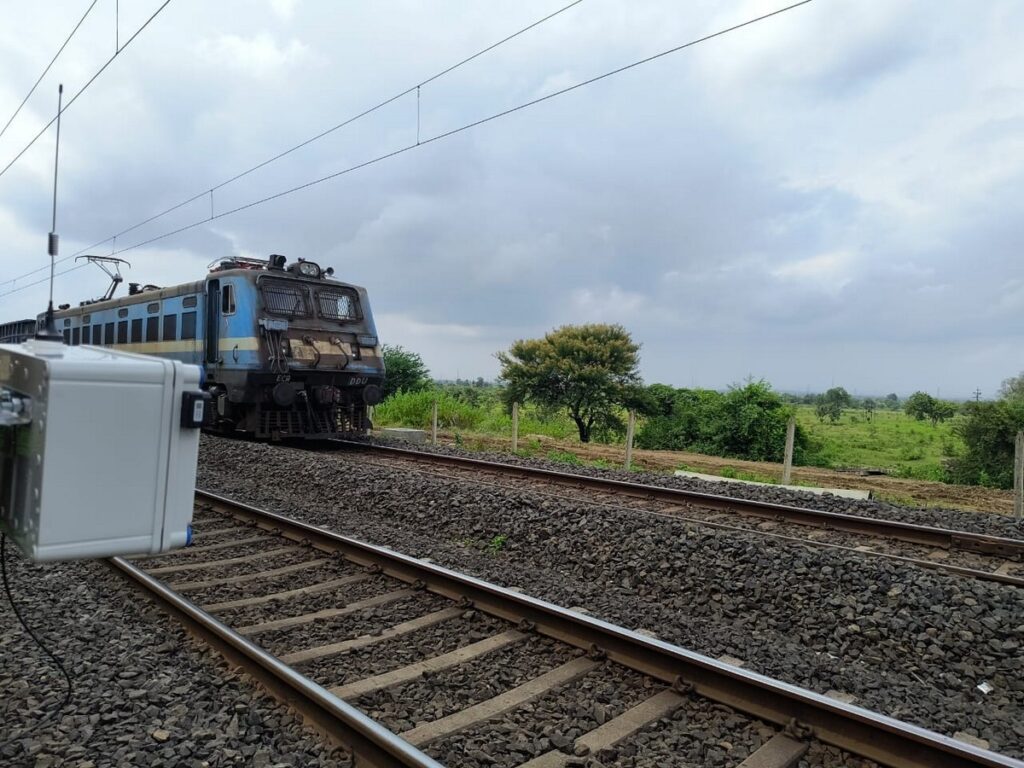
The railway alert system installed on an electric pole along railway Photo: Vedant Barje
WCT’s WildTech team worked with the Conservation Research team to develop an early-warning system based on sound alarms, meant to deter wild animals from railway tracks, pre-emptively.
2. Animal monitoring and tracking systems for terrestrial and aquatic species, as well as alternative low-cost solutions to animal tags
We are developing passive acoustic tracking and monitoring systems for terrestrial and aquatic vocalising species (e.g. river dolphins, bats, birds, elephants), as a solution to problems in being able to observe them visually. We are also developing alternatives and cost-cutting solutions to existing animal tags.
Results from video grabs of underwater imaging SONAR from the Chambal River.
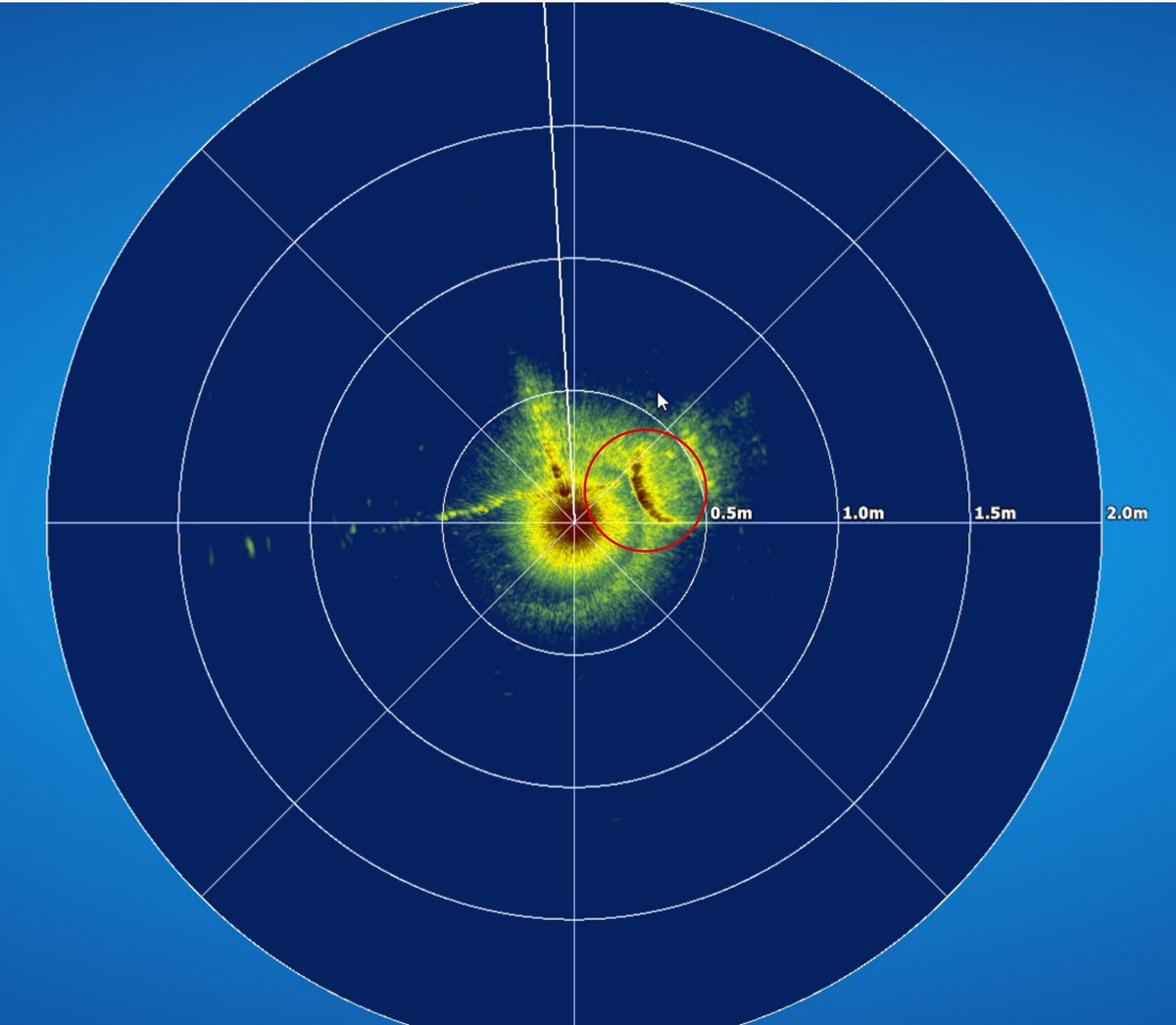
A crocodile is seen on the right of the central reference point, at a depth of around 4 m.
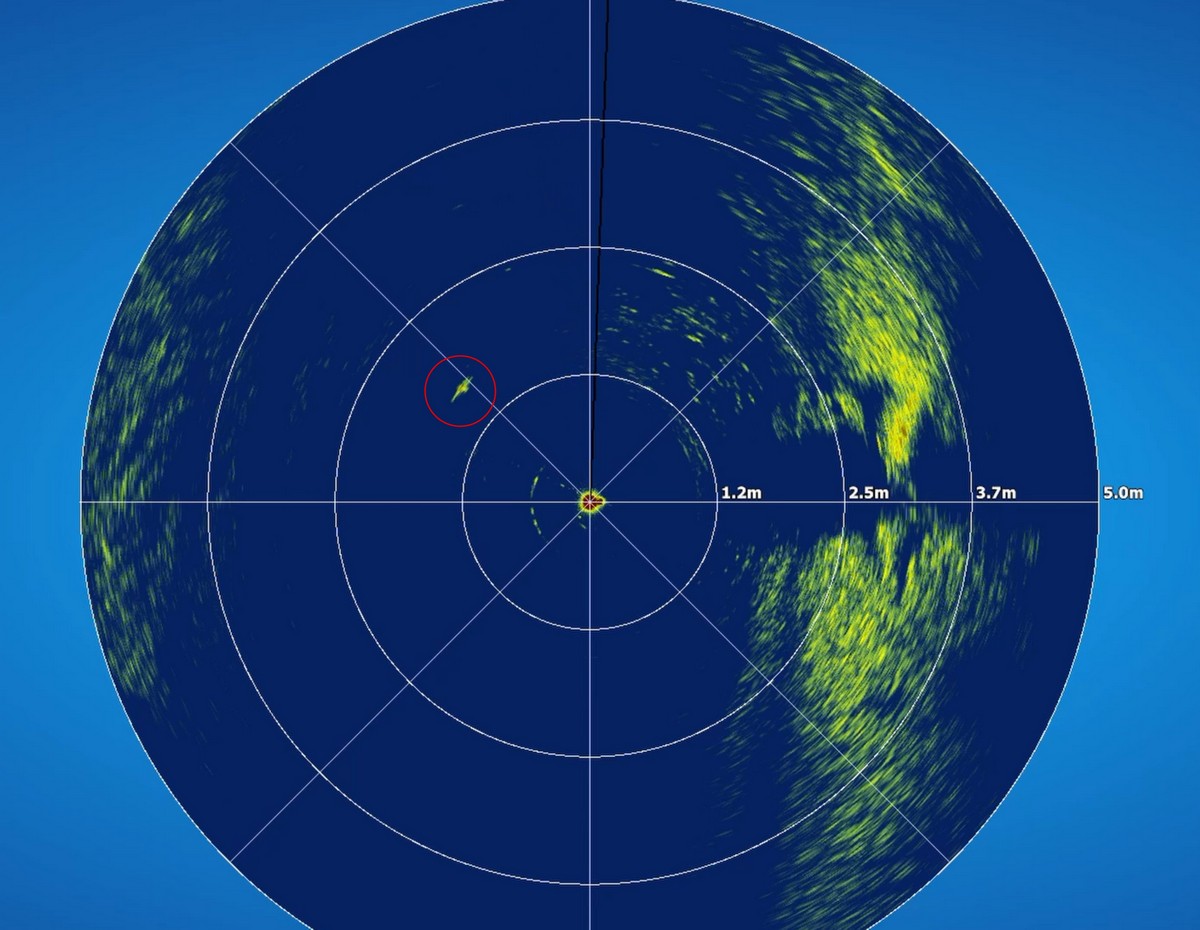
A side-swimming Ganges river dolphin captured diagonally from the central point.
3. Extended applications for threat assessments for endangered species and habitats.
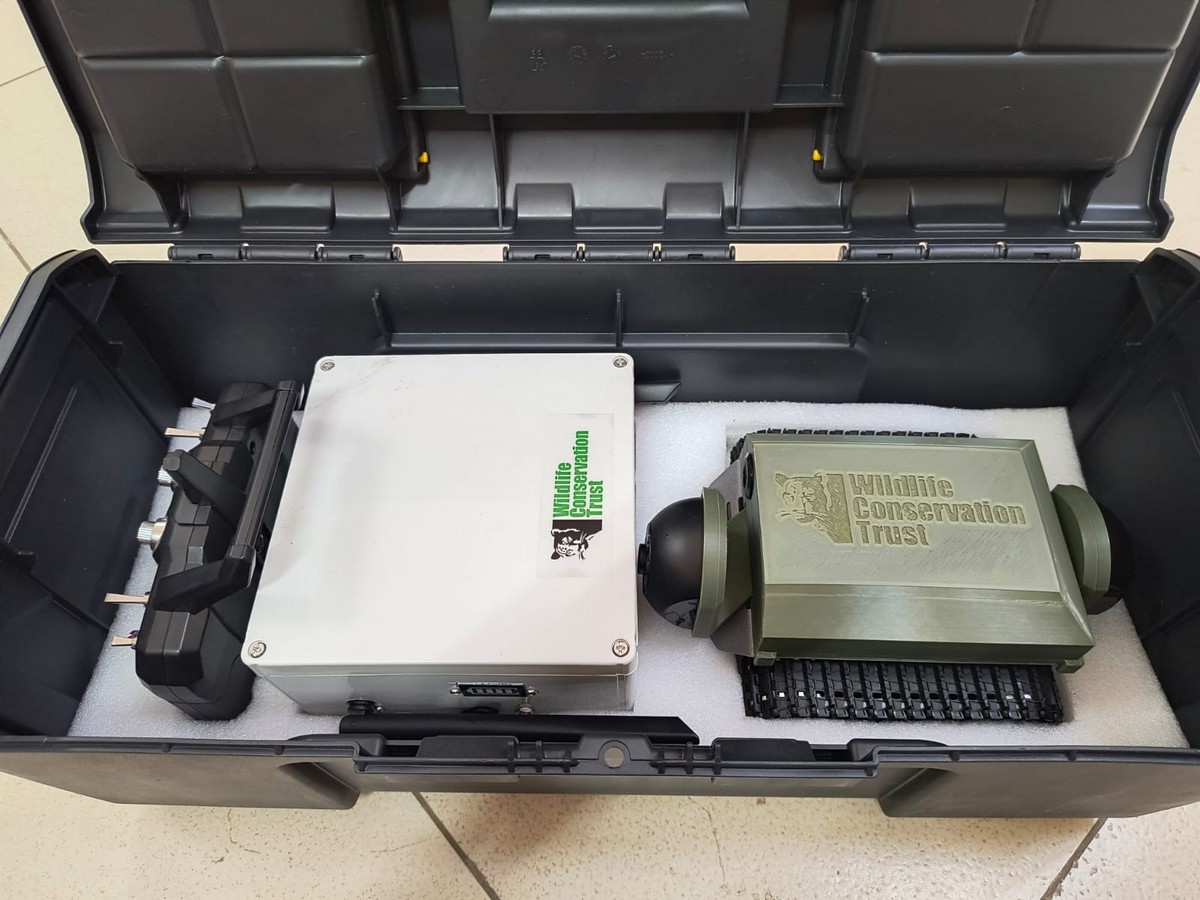
Pangolin BurrowCam, a remotely operated and telemetered vehicle with a camera that can move through rugged terrain like a miniature tank, for monitoring habitats of fossorial animals such as pangolins with image and video capabilities.
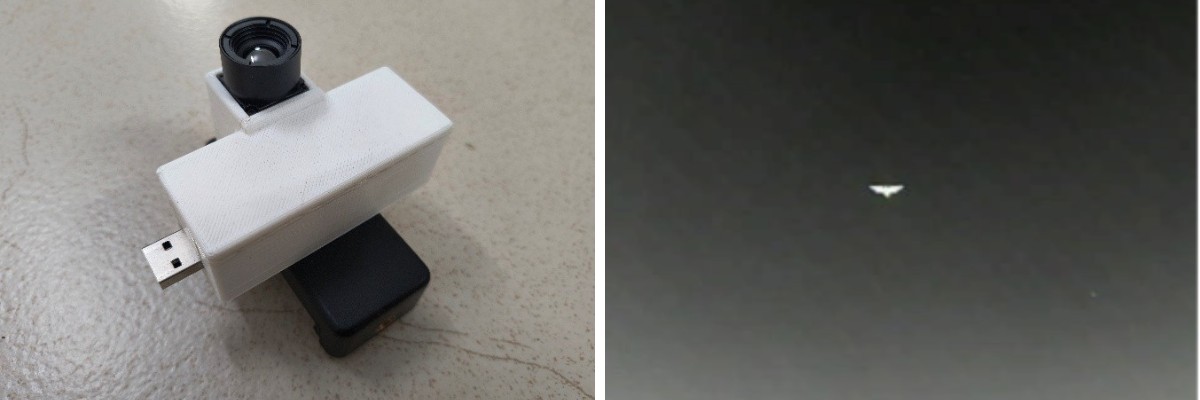
Left: thermal modules designed for UAVs to design a system which can be plugged into a phone and can be used to view and record thermal video feed. Right: Image of a high-flying bat (Indian Flying Fox) captured using the thermal imaging module.

